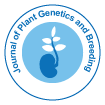Palynology in Forensic Science: Applications in Archaeology and Crime
Received Date: Nov 01, 2024 / Published Date: Nov 27, 2024
Abstract
Palynology, the study of pollen and spores, has emerged as a powerful tool in forensic science, offering valuable applications in both archaeology and criminal investigations. Pollen grains, which are highly resistant to decay, can be recovered from a variety of materials, including soil, clothing, and human remains, providing critical evidence for linking individuals to specific locations or timeframes. In archaeology, palynology aids in reconstructing past environments and understanding human activity through the analysis of ancient pollen records. In forensic contexts, it can help establish the location of a crime scene, determine the time of death, and track the movement of individuals or objects. By examining pollen assemblages, forensic scientists can pinpoint geographic regions and specific habitats, even identifying subtle changes in the environment over time. This ability is especially useful in cases of unexplained deaths, missing persons, or historical investigations. The accuracy and sensitivity of palynological analysis make it a valuable complementary tool alongside DNA and other forensic methods.
Citation: Johnson W (2024) Palynology in Forensic Science: Applications inArchaeology and Crime. J Plant Genet Breed 8: 241.
Copyright: © 2024 Johnson W. This is an open-access article distributed underthe terms of the Creative Commons Attribution License, which permits unrestricteduse, distribution, and reproduction in any medium, provided the original author andsource are credited.
Share This Article
Open Access Journals
Article Usage
- Total views: 169
- [From(publication date): 0-0 - Feb 23, 2025]
- Breakdown by view type
- HTML page views: 141
- PDF downloads: 28
